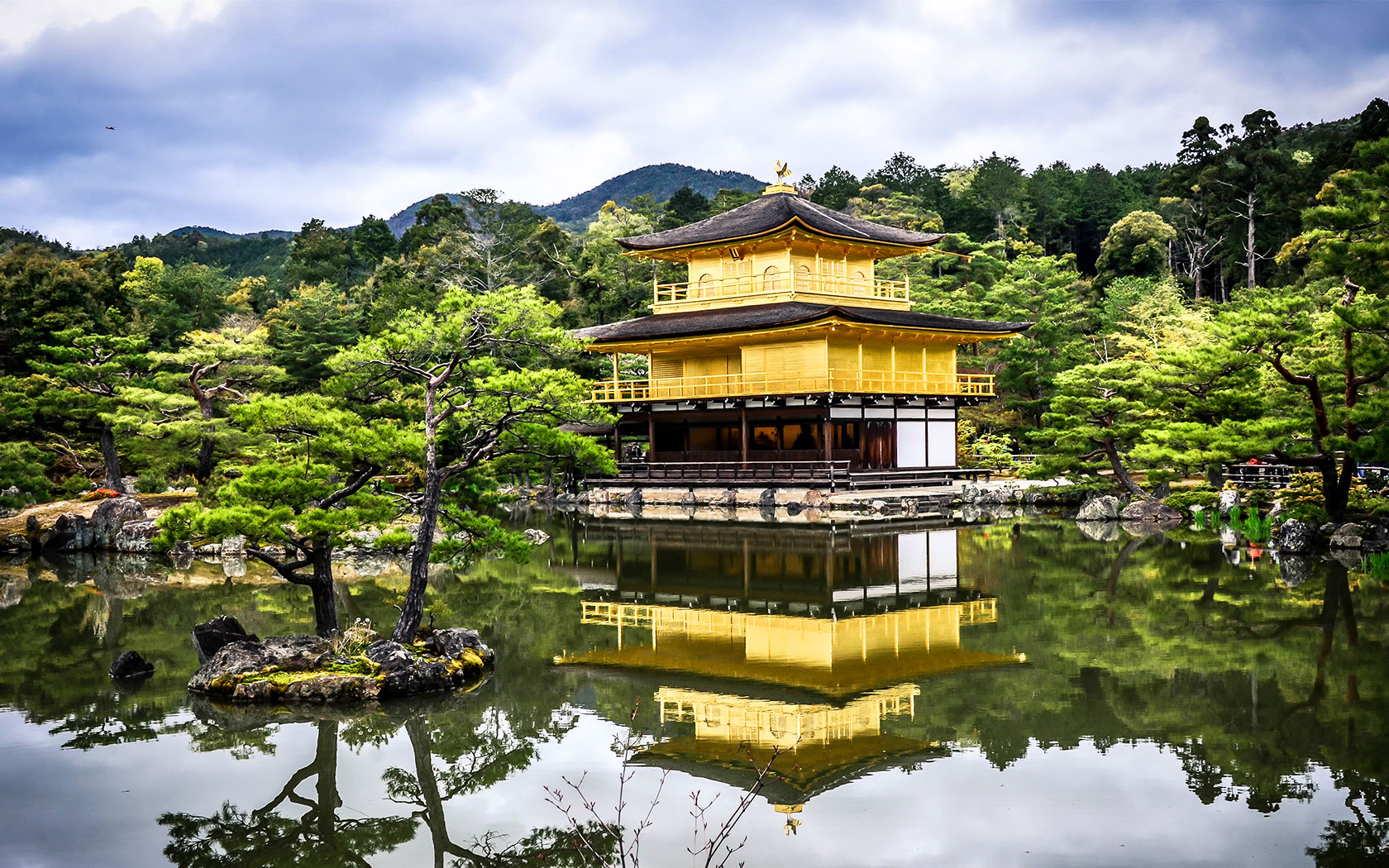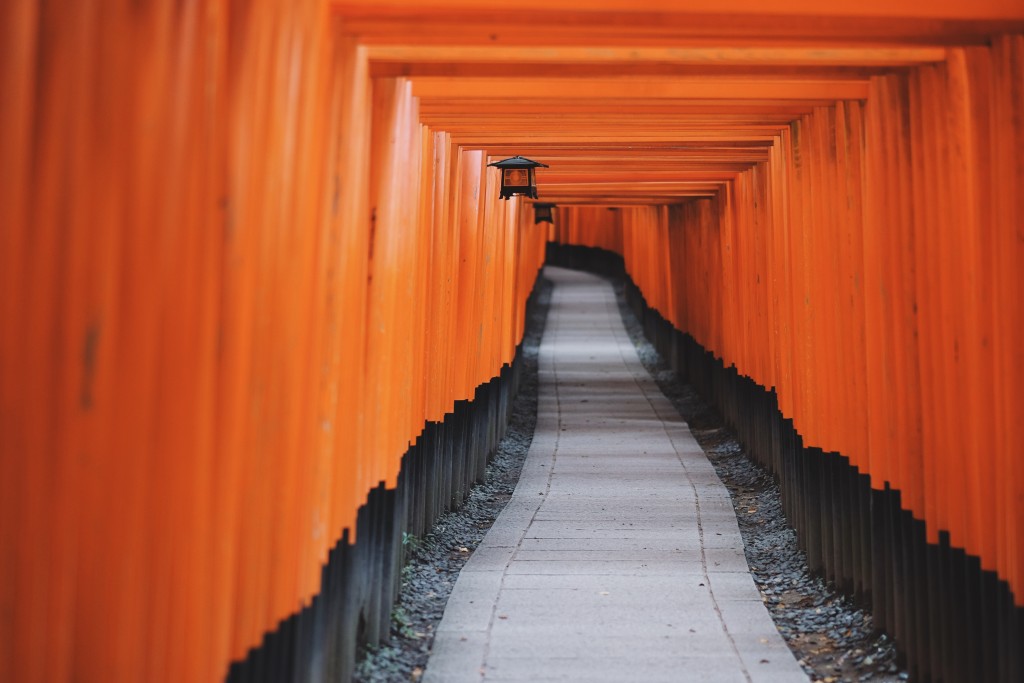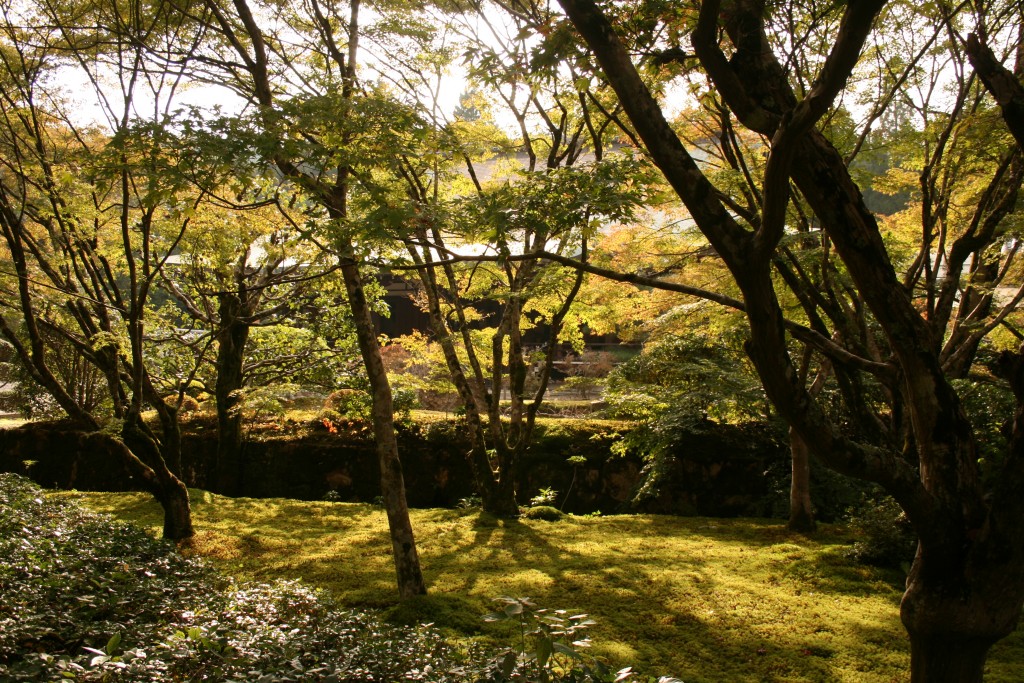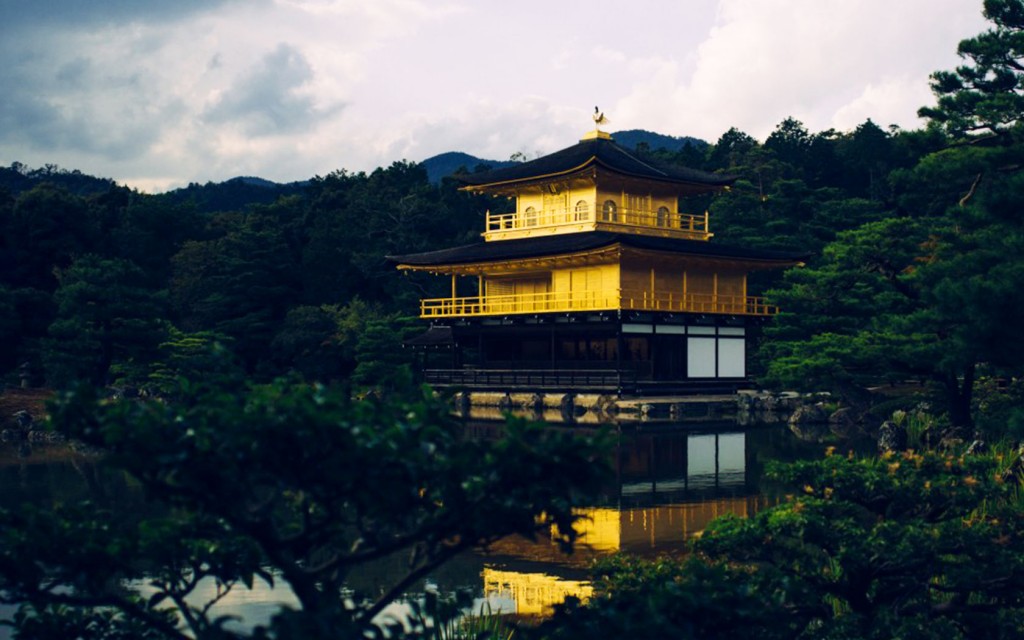The Ultimate Guide To Biking Around Kyoto’s Temples

Kyoto’s 2000 or so temples and shrines pose a challenge to any traveller – which ones to see in a limited time, and how? The answer is two wheels, a plan, and a bottle of Pocari Sweat.
Electric bikes are the best and cheapest way to get around the city and visit the magnificent sacred places which aren’t always adjacent to a subway stop. So, get out of bed way early, grab a map (or do the offline google maps trick) and head to a bike rental shop.
[related_articles]52258,66099,61597[/related_articles]Try J-Cycle for something fantastic and affordable. If you’ve never used an electric bike before, they are a bit like when you took the training wheels off but dad still gave you a push.
It’s best to start early if you want to make the trip in sunlight hours. Don’t forget to pack hydration. I wasn’t joking about the Pocari Sweat; the iconic sports drink is on course to be the next Arizona Iced Tea #aesthetic. Oh and once you’re riding, always park your bike in marked bike parks when visiting the temples – if you leave it just anywhere it could get towed away.
Kyoto Station and the south-east

Once you’re kitted out with an electric bike, head east across the Kamo river. There is a cluster of Buddhist temples in the area, and the most magnificent is Kiyomizu-dera Temple. If you’re in town during spring, you’ll experience picturesque cherry blossom exploding all around the temple. Whatever the time of year, make sure to drink from one of the three streams of the Otowa Waterfall for a long life, good fortune, or academic success (NB: may not taste as good as Pocari Sweat).
Refreshed by ancient waters, ride south a short way to the thousands of vermillion gates at Fushimi Inari Taisha. Park your bike and head up into the mesmerising densely-placed gates which recede into an infinity of instagramable frames. As a bonus, 30 minutes along you’ll be treated to a sweeping view of the city where the gates open out. See if you can see the soaring To-Ji pagoda.
Way out west

After sucking in the fresh air, roll back down through the gates and pump your way westward through Minami and across the Katsura River. Saiho-ji Temple lies at the edge of the forest. You’ll probably need a breather after the ride, and this is one of the most tranquil places on earth. The temple is famous for its remarkable moss garden, which is protected by a charming but strict procedure for admitting visitors.
[related_articles]66816,64526[/related_articles]To get in to Saiho-ji, you’ll need to send a postcard request well ahead of time letting them know your preferred visiting day, and the size of your group (try asking your hostel/accommodation for assistance with this or use a site like this one). If you do it right, you should get an invitation to come at the desired time, and instructions for Shakyo, a religious rite which you’ll need to complete by copying out Japanese characters before you can enter the garden. It seems like a lot of work just to look at some moss, but the hard work makes the experience more rewarding, and means that it stays special.
The King in the north

From Saiho-Ji, you can head directly north to Daikaku-ji Temple, a former imperial palace with a serene cherry-blossom covered pond and several Japanese treasures. Once you exit Daikuki-ji, take the road east. For my money, this is the most beautiful part of the ride – you’ll pass by sprawling rice paddies and a wide lake before the road climbs lazily up into the dusky wooded hills. With the sun at your back, give your legs a rest and let the electric motor do its job. After a short climb, you’ll find yourself among the rock gardens of Ninna-ji Temple, nestled in the foothills of the northern mountains.
[related_articles]63494,62792[/related_articles]The jewel in Kyoto’s crown is Kinkaku-ji, the Zen temple famous for its gold-leaf-coated pavilion. It is most packed on Sundays, so head in on a weekday if you want to avoid long waits and the literal crush. Among the churning crowds the pavilion itself is brilliantly still and stately. When breezes ruffle the water its reflection dances impishly. Before leaving Kinkaku-ji, grab a sesame or green tea ice cream from one of the snack vendors – trust me.
There and back again
On the way back to return your bike you may still have time to visit Kyoto Imperial Palace or the Nijo Castle, but make sure to check the hours before pedalling up. Dropping off your bike, let the day’s motion and stillness find a balance in you before heading off to that nightclub in a subway station.
[qantas_widget code=NRT]Check out Qantas flights to Tokyo.[/qantas_widget]








